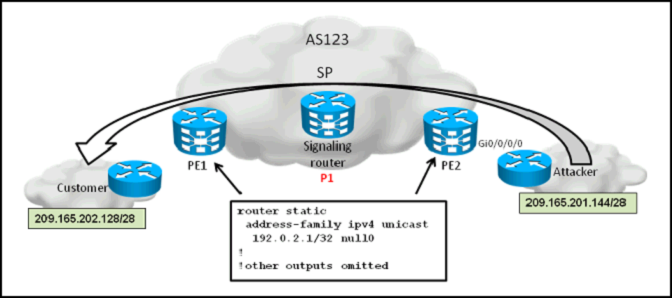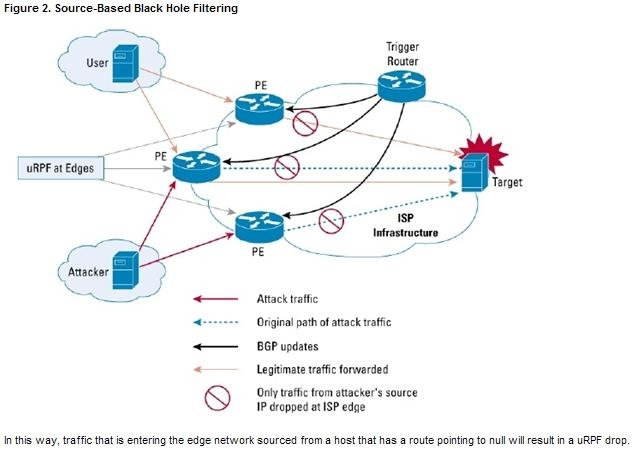

Refer to the topology diagram shown in the exhibit and the partial configurations shown below.
Once the attack from 209.165.201.144/28 to 209.165.202.128/28 has been detected, which additional configurations are required on the P1 IOS-XR router to implement source-based remote-triggered black hole filtering?
!
router bgp 123
address-family ipv4 unicast
redistribute static route-policy test
!

Comments